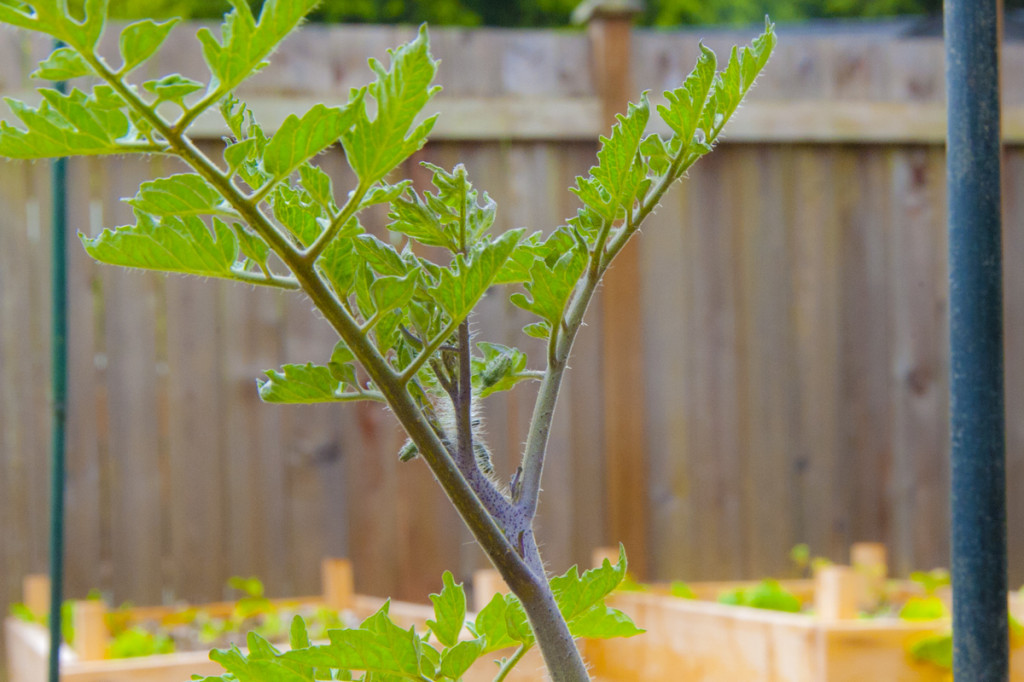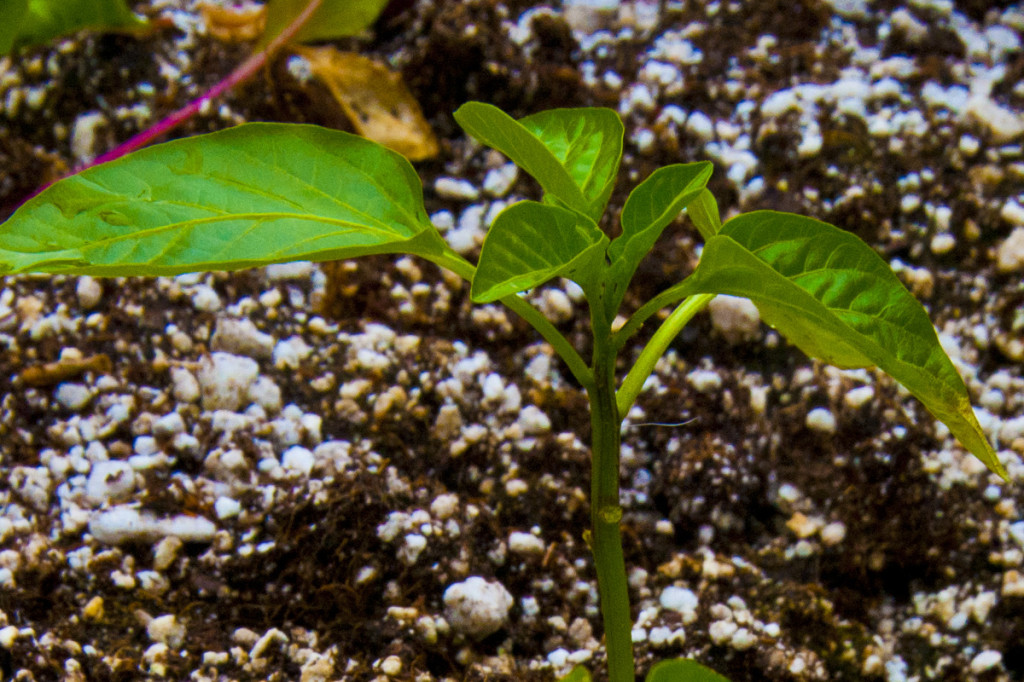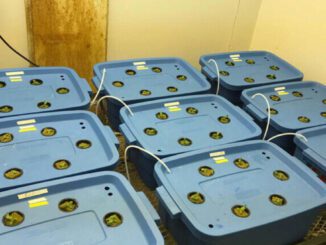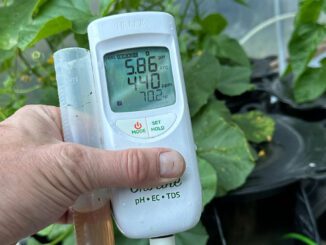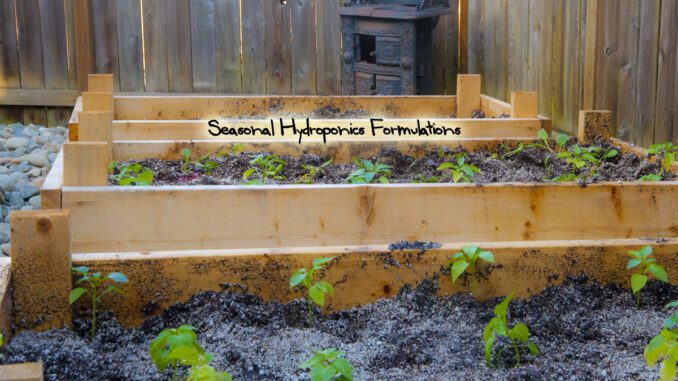
Seasonal Hydroponics Nutrient Formulations
If you grow indoors in a controlled hydroponics environment, you likely know that there are benefits to changing your crop fertilizer nutrient ratios through different growing phases like veg, early bloom peak budding, ripening, etc. Outdoors or in greenhouses using natural light, growers may switch from early or late seasons fertilizer formulztions. For example lowering Nitrogen and increasing Phosphorous and Potassium in the fall. But what about seasonal hydroponics formulations?
The principals behind seasonal hydroponics nutrient formulations may also be applied with indoor growing too-as a matter of fact you may be doing some of that already, by following a well thought out crop feeding program.
Seasonal hydroponics formulations take into account the effects that changing environmental conditions have on crop development, for example in wetter conditions or in times of lower light intensities (cloudy days).
If you don’t think your plants perform differently when conditions change, you may be making a very expensive mistake.
Indoors, especially if you run IN/OUT ventilation, where outdoor weather conditions affect your grow room indoors with things like humidity, temperature and other air qualities, following some of our tips on seasonal hydroponics nutrient formulations may help stack onto your growing success.
Cloudy Conditions, ie low light levels
Lower nitrogen (N) and higher potassium (K) values are preferred here. Whatever nitrogen levels are being applied should be in Nitrate (NO3) form, and Ammonium sources (NH4) should be avoided. Your plants will stretch and easily be “nutrient burned” if you apply too much nitrogen, especially in Ammonium forms, when lighting intensities are relatively low.
Cold Temperatures
Increases in potassium (K) with additions of silicate (Si, for example potassium silicate) can help make plants more frost hardy. Kelp is a great source of potassium and many trace elements. Besides the minerals it packs, a good kelp solution supplies Amino Acids to plants that have a wide variety of benefits including promoting more frost tolerance.
TIP: Watch for phosphorous (P) deficiencies in cooler weather. A lot of varieties suffer when soil temperatures are lower than 60Deg F, as phosphorous becomes much harder for plants to take up.
*Microbial Solutions may help improve phosphorous availability during colder conditions, and further boost cold hardiness in plants.
Above: cold weather phosphorous deficient tomato plant
Wet Conditions
This can be a tough one to manage, depending on what is “wet” and what the crop tolerance and preference is when it comes to moisture levels.
In terms of nutrients, wet conditions in soils means that there is little oxygen for the roots, because the space in the soil and around the roots is filled with stale water instead of a healthy balance of air to water. This may also leach (wash) nutrients out of the root zone, or in the case of organic nutrient sources, may cause them to “lock up” in less available forms.
If plants appear to be suffering any nutrient stresses during prolonged wet conditions, it may be preferable to apply fertilizer via foliar sprays until drier conditions in the roots allow for regular fertigation (applying fertilizers with water).
Above: It can be a challenge to keep young plant healthy during prolonged wet conditions
High Light Conditions
Typically, in natural settings this often means warmer temperatures too, for example the long days of mid summer that seasonal gardens wait all year long for. During these types of conditions, your crop is using more water than nutrients (fertilizers) versus more moderate light levels, for example in Spring.
However, plants are growing at an accelerated rate and have more biomass by mid season to support versus when they were small transplants in earlier season.
Ammonium nitrate sources, in moderation, can be applied at this time to fuel incredible growth rates.
Over applications will produce tall, soft and weak plants that are easily damaged by insects or diseases. This is a critical time for Calcium, and note that it is a slow moving element in the plant and in the soil. Foliar applications of calcium or adding natural complexors like Fulvic Acid to fertigation will help avoid deficiency. Magnesium (Mg, ie Epsom Salts), Iron (Fe) and Zinc (Zn) may also be in higher relative demand-treat as with Calcium.

